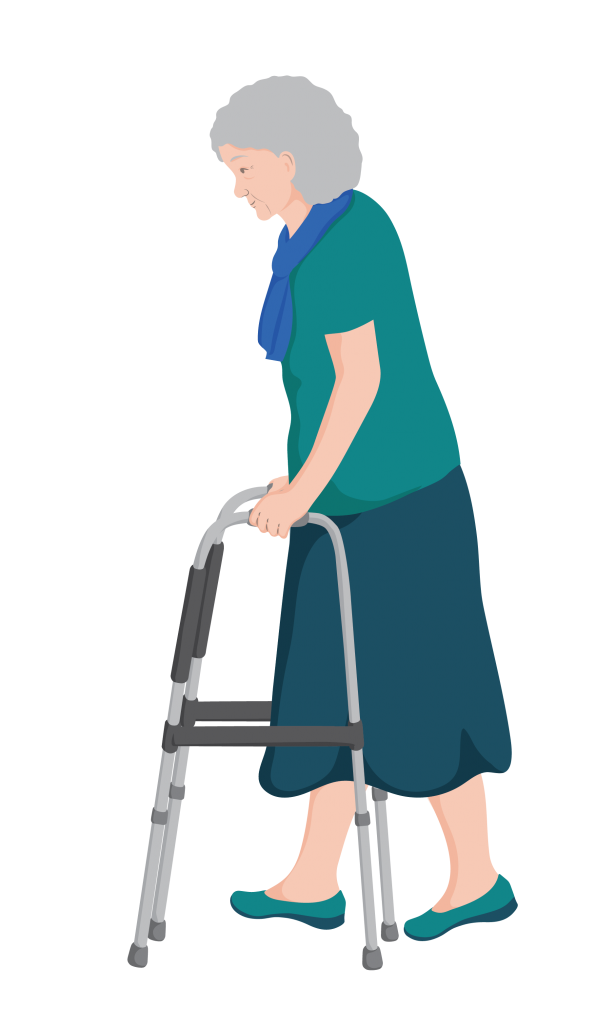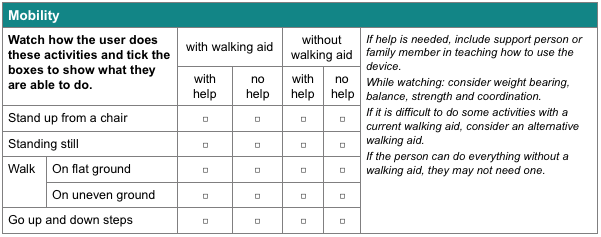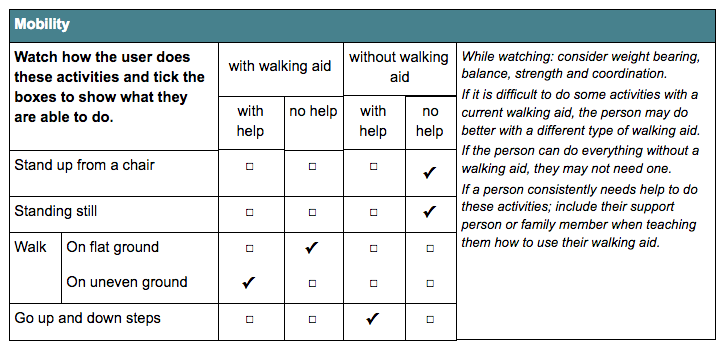The last part of assessment is to observe the person’s mobility.
Before you begin, explain to the person that you will ask them to complete some mobility tasks.
Ask them what help they think they may need, and be ready to assist at any point.
If they usually use a walking aid, make sure they have one for the assessment.
Let them know that they should only do what they feel able to do safely.
Start with the simplest activity (standing up from a chair) and progress.
Watch how the user does each activity.
Tick the box that matches:
- The activities they can do
- With or without a walking aid
- With or without help
Watch the video that demonstrates a mobility assessment.

Activity
Remember Cali?
Cali can stand up from a chair on her own without any help. She can stand still without holding onto her walking frame. She can walk on flat ground only with her walking frame. She is not confident to walk outside by herself. If she needs to go up the stairs she needs someone to help her because she cannot use the walking frame on the stairs.
Tick the boxes on the assessment form to record her mobility level.
Tip – once you have completed the assessment form for Cali click on the question below to view a correctly filled in assessment form.
Using the results of the mobility assessment
If assistance was needed to complete an activity, once you provide a walking aid, you will need to teach a carer/relative how to assist them.
If the person cannot do an activity, think about if a walking aid will help them to do that activity.
If they are slow and need a lot of help to move around then they will need a more stable walking aid, such as a walking frame. If they need only a little assistance then a walking aid with less support, like a walking stick, may be enough.
If they can do everything without a walking aid or assistance, they may not need a walking aid at all.

